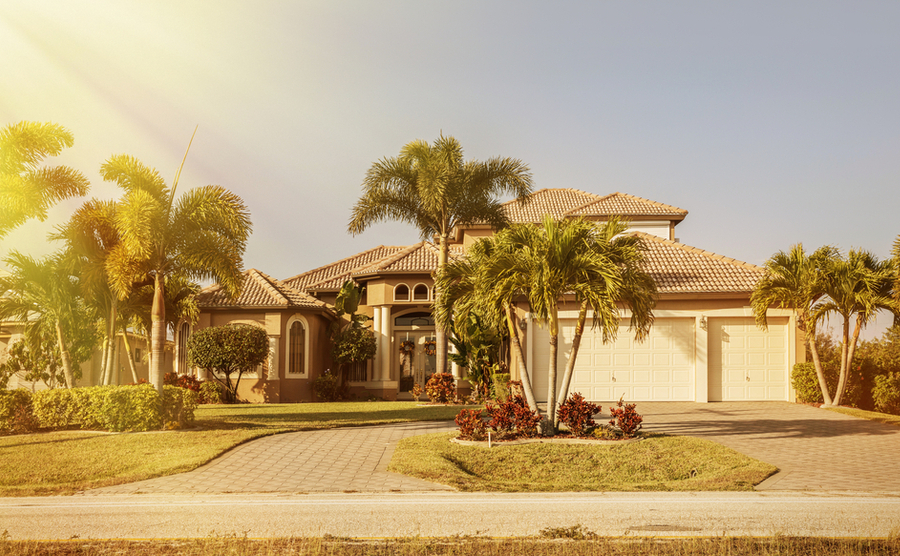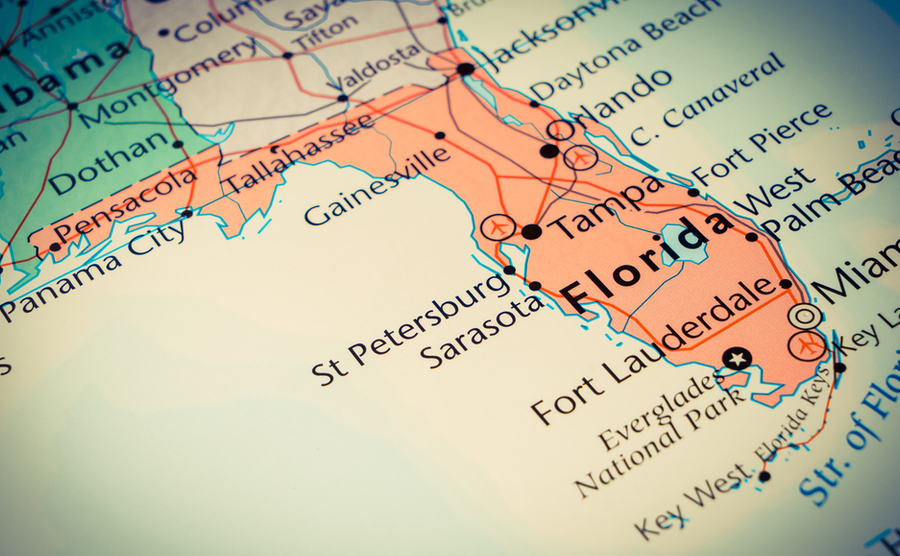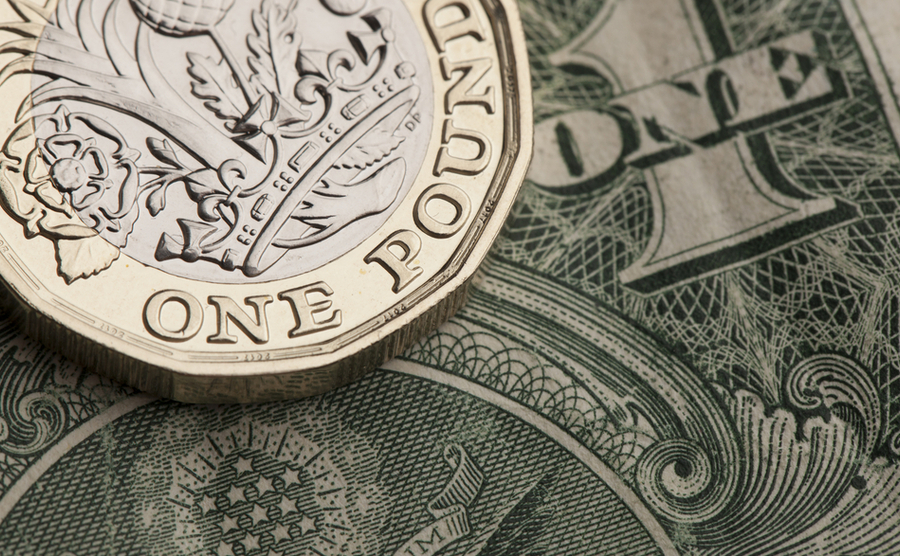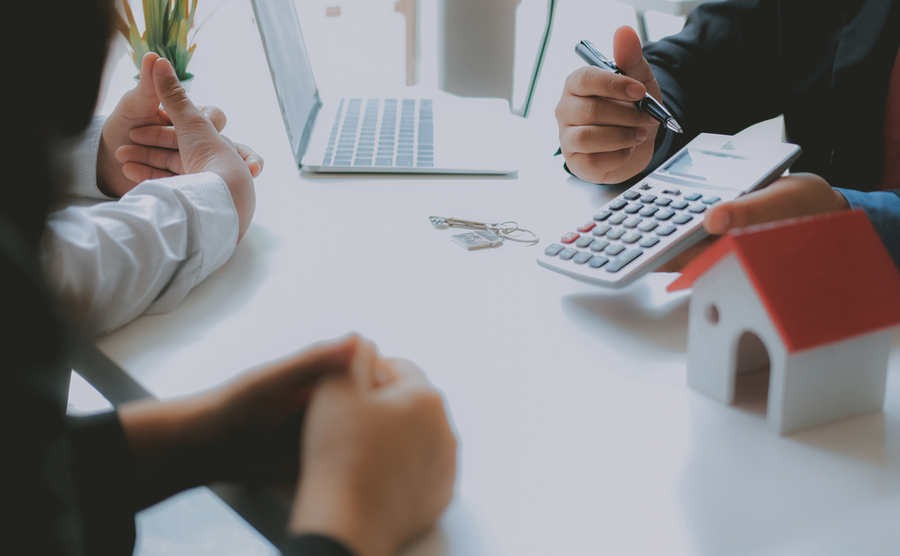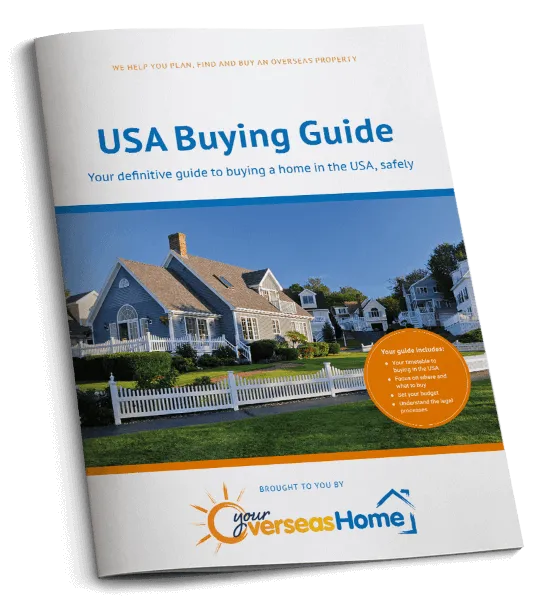Are you dreaming of becoming a homeowner in Florida but feel overwhelmed by getting to grips with the process of doing just that? Here is our step-by-step guide to purchasing a property in America’s sunshine state.
Athoug each state can have slightly different rules and tax rates, buying a property in the USA is easy throughout the country.
1. Choose an area
Your home buying dreams may be inspired by the trip (or trips) of a lifetime to Florida. Sand, sea, delicious Cuban food, Universal Studios all reign in your memories. But staying in a hotel or a villa is distinct from owning a property there.
Find homes in Florida via our property portal.
According to Zillow, the average house value in Florida is $394,728. The city in Florida with the most affordable housing is Masaryktown at just over $200,000. But Masaryktown is sleepy and small with a population close to 1,000 – according to the 2020 census. That may be right for you – or you may prefer somewhere a little closer to the action, should your budget be able to stretch that far.
But choosing an area is not just about property prices. It is also a chance to really define what you are looking for in a Florida property.
If you are moving with children, it will be worth researching schools in the different areas. It is likely that a move to the US will mean using your car more than you do here but try and work out how long a drive you are really willing to put up with for things. How far away do I want to be from the airport? The supermarket? Indeed, from Disney World? Are you more a golf-driven person who will feel at home along the First Coast or are you after the brilliance and luxury of the Gold Coast?
It may be that you need a few visits to Florida to find which slice of it speaks to you the most.
2. Set your budget
This point ties into the first in that your choice of area will be restricted by your budget. As well as the overall cost of the property, there are a few other payments that you will need to budget for.
- Down payment: This is how much you will pay upfront for the house. It is usually between 20-30%.
- Maintenance costs: This is an extra home ownership cost. They are usually 1% of the total cost of the property a year.
- Closing costs: These are payable once you have put a deposit down. They can be up to 5% of the total costs of the home.
Additional costs will include agency fees, inspection costs, the cost of moving (don’t forget this one – it is a much bigger job than driving your belongings across the UK), and furnishing.
3. Contact a currency exchange specialist
This goes hand in hand with budgeting for your home in Florida. And other than Florida specific rules, this is one key difference between purchasing a property at home and overseas. Currencies fluctuate by the second – making it difficult to budget for purchasing your home in Florida. If you are trying to set aside money, and the exchange rates move, your savings may not be as useful as they once were. You are at risk of it coming to payment time, and suddenly, the exchange rate has moved against you, and you are forced to dig deep in your pockets for money that you do not have.
To safeguard against this, we recommend talking to currency specialists, Smart Currency Exchange. Not only do they have a grip on the movement in the exchange rate, but they can also organise a Forward Contract for you. This allows you to lock in an exchange rate for twelve months, which will mean that you can budget effectively. Once you have purchased your Florida home, they can also help you move money between the UK and the USA with minimal risk.
4. Find a reputable estate agent
A good quality estate agent should be your ally in the home buying process. When you are buying a home in Florida, their guidance is even more valuable. For you can’t simply drive down to Florida and check things out for yourself. Indeed, if you are having trouble narrowing down on a specific location, your estate agent will be able to tell you where the best schools and beaches are, etc. Moreover, your estate agent will be able to help you find lawyers and mortgage lenders too.
The good news is that the USA takes this business very seriously. That’s why realtors can only call themselves that if they pass exams and follow rigorous continual training. Read more about the Florida Association of Realtors here.
Look for estate agents with a number of years of experience, especially ones that have already worked in your price range, and those that have helped British buyers before.
5. Pre-approval and getting a mortgage lender
There are no restrictions on a British citizen purchasing a property in the USA. However, it does not grant you residency. Therefore, if you do not apply for a visa or residency, you will be restricted by how long you can stay in your Florida home.
Most mortgage lenders will work with a British buyer even if they have little to no credit history in the USA. They will find an alternative way to work with you – and there is always the option of finding a British lender based in Florida, it might make the process more genial.
It is recommended that you get pre-approval before you begin your property hunt. This is a written conditional commitment from a lender for an exact loan amount, giving you the freedom to search for a home at that price.
Typically, in Florida, mortgage lenders require a 20-30% deposit from foreign buyers. Most buyers opt for this with a fixed rate of 5.5-6.5%. It is possible to go for a down payment of less than 20% but with borrowing more money, you will have more to pay back monthly and higher interest rates. Plus, your loan company may require private mortgage insurance if your down payment is less than 20%.
6. Begin searching for your Florida home
Now that you have ironed out the logistics, it’s time for finding a property that matches your visions of a home in Florida. Similar to choosing an area, this is also a time to work out your “must-haves” and “wants”. How many bedrooms and bathrooms are you picturing? If your home is by the sea, does it matter so much if it doesn’t have its own swimming pool?
Head to our property portal for some gorgeous potential homes.
7. Book your viewing trip
As delightful as gawking at homes online is and as useful as the intel from your reputable estate agent might be, there is nothing quite like visiting a property in person to get a real feel for it. We recommend visiting at a time of year that you have not been before to see a different side to Florida. Although, the weather in Florida is pretty magnificent all year round, with the coldest month being January at 16 degrees and the height being 28 degrees in August.
Plus, rather than staying in a hotel, stay in a property that is like the ones you are looking at. Preferably, in the same area. This will give you a chance to imagine living there, beyond the gloss of a holiday.
Take a million photographs and ask every question you’ve got.
8. Submit offers
Properties in Florida do not tend to stay on the market for longer than 70 days. March is the fastest time for home buying in Florida and December is the slowest. So, if you do fall in love, don’t hesitate to make an offer. In Florida, 13.5% of properties go for over the sale list price.
Things tend to get easier in the process here, as proifessionals who do this every day take over. All you have to do is pay them, but at least buying costs are relatively low in Florida.
9. Inspections and appraisals
You will need to hire a licenced inspector to check the quality of your home. They should be looking at: the roof, foundation, electrical system, and plumbing. It is also recommended that you have a separate inspection to ensure the property does not contain any health and safety hazards. In Florida, you may also want to check for pests.
An appraisal will determine that the property is actually worth what you have offered, and that the seller is not taking advantage of you.
10. Closing on your Florida home
You will want to make sure all your documents are in order, pay your closing costs, and now, the keys to your Florida home can slip into your hand!


 Property Guides
Property Guides France
France Portugal
Portugal Spain
Spain Italy
Italy USA
USA Ireland
Ireland Greece
Greece Cyprus
Cyprus Australia
Australia New Zealand
New Zealand Canada
Canada Turkey
Turkey UK
UK